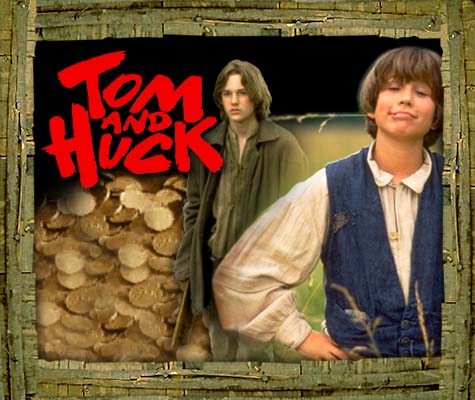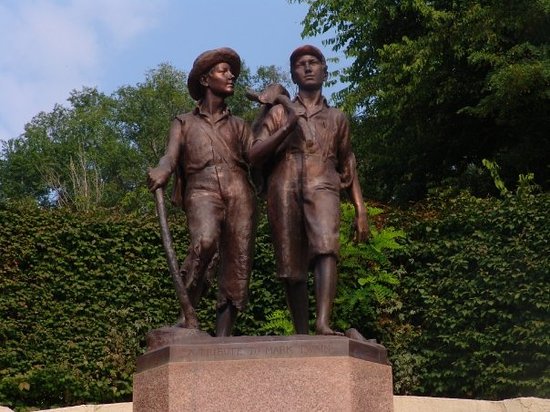The
Adventures of Tom Sawyer is a novel that captures the
imagination of children and succeeds in its depiction of the young Tom Sawyer. In
addition to talking neighborhood children into believing that painting a fence
is the most fun a kid could have on a weekend, he also went on many adventures
with his new friend Huckleberry Finn. Tom’s vivid imagination flavors these
adventures as relying on stories is how Tom contextualizes his world.
 |
| For those of you who wished to forget that this movie happened... Your welcome. |
For one of these adventures Tom approaches Huck Finn,
after unsuccessfully trying to recruit other boys from his town, with the
prospect of digging for possibly-real treasure, which Tom believes has been
buried nearby by possibly-real robbers. The story’s narrator describes this
desire as a natural step in the development of a young boy’s imagination. “There
comes a time in every rightly constructed boy’s life when he has a raging
desire to go somewhere and dig for hidden treasure” (Twain 158) After Tom makes
his proposal Huck asks where they should dig for this buried treasure. To which
Tom responds that they can dig almost anywhere but the treasure is “hid in
mighty particular places” like on islands, under limbs of dead trees, and/or
under the floorboards in haunted houses.
After this revelation, Huck wants to know why the robbers
hide the treasure instead of keeping it to spend but the closest the reader
gets to an explanation from Tom in regards to why the robbers don’t do this is that
they “don’t do that way” (159). This exchange between the two boys is
interesting because it reveals so much about their characters and how they view
the world around them. After Tom tells Huck about the way that robbers operate,
instead of accepting it as law, Huckleberry Finn questions the very nature of
the robbers’ logic. They bury it in remote locations instead of hanging onto
their fortunes to live a life of lavish luxury. This logic doesn't make any
sense to Huck, so he questions it. Huck Finn views the world from an analytical perspective, in that he questions the ideas and concepts he doesn't understand.
In fact his questioning nature is likely what makes the observations made in
the Adventures of Huckleberry Finn possible,
wherein he questions the entire institution of slavery which he was raised to
believe was perfectly acceptable (but more on that in future posts).
 |
| That's more like it. |
Tom on the other hand buys the whole concept without
question and tries to rationalize away the logical inconsistencies, pointed out
but Huck. His explanation for why the clandestine figures leave their plunder
in such inconspicuous places is simple forgetfulness (in regards to placement
of the treasure) or death, possibly by ghosts, witches, or pirates in Tom’s
mind. Unlike his friend Huck Finn, Tom cannot perceive the world outside the
context of stories, so he goes to extraordinary lengths to justify his
conceptualization and he does everything withing his power to shape his reality
to the logic of stories. This need to shape the world into a story causes some controversy
at the end of Huck Finn’s adventures but that’s another book entirely.
Tom Sawyer’s adventures are interesting and imaginative
and points out the power of wonder and imagination but the next Twain novel I’ll
be discussing on this blog looks down from the lofty heights of imagination
down to the reality of the world and asks some important questions of it.

No comments:
Post a Comment